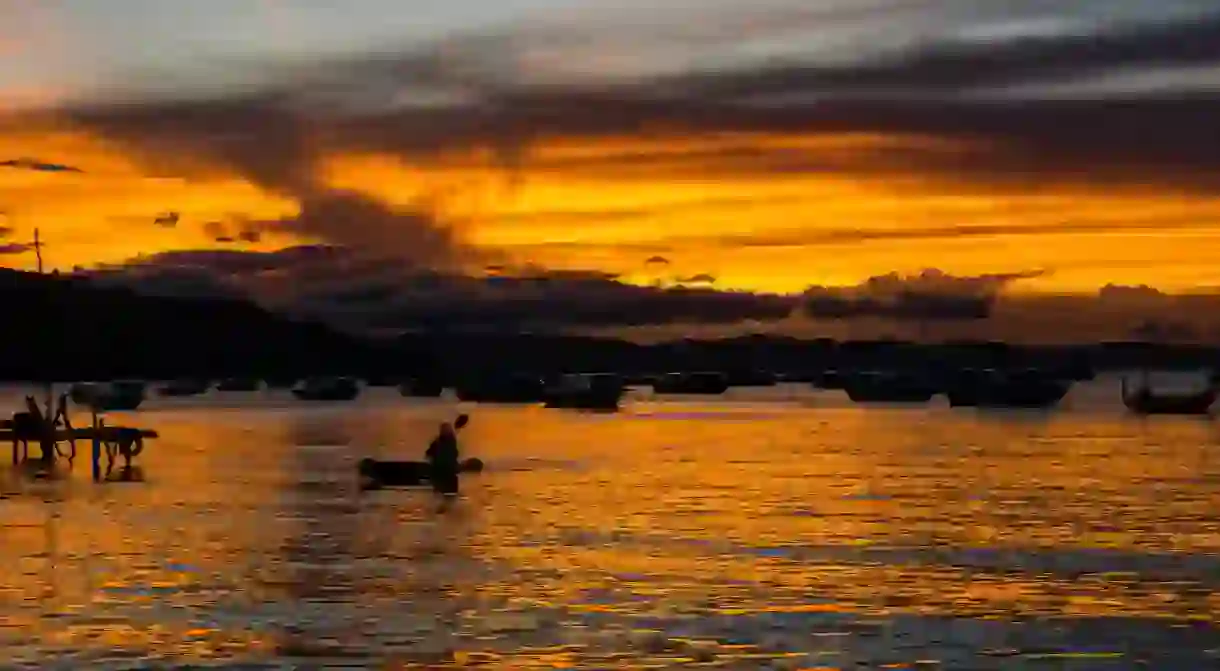How to Spend 48 hours in Copacabana, Bolivia

A tiny town on the southern shores of Lake Titicaca, Copacabana was once a sleepy fishing village best known for its many religious fiestas. Today, however, more and more visitors are stopping by to explore nearby Isla del Sol, meaning there’s an ever-growing number of attractions here. From exploring sacred pre-Inca sites to catching your own trout lunch, here’s how to spend 48 hours in Copacabana.
Explore pre-Inca ruins at Horca del Inca
Perched high up on a hill overlooking Copacabana town, Horca del Inca is one of the most sacred sites in the region. It’s thought that pre-Inca civilizations carved these impressive rocks (making holes and marks so that the sun’s rays could form different shadows on the ground) to serve as an astronomical observatory. During the June solstice (the Aymará new year), the locals still hike up to the site to predict whether the coming year will bring a prosperous harvest. It’s also possible to see offerings to the goddess Pachamama, such as coca leaves and incense, tucked in the stones here all year round.

Catch your own lunch on the floating islands
Just a 10-minute taxi ride from the center of town (or a leisurely one-hour walk), families living on a cluster of floating reed islands serve up freshly caught trout to visitors. Since the trout farms lay right next to the islands, they even let you choose and catch your own fish. The fishermen and women will then prepare and cook the trout (which comes with rice, chips, and salad) right in front of you.

Hike to Yampupata
Sadly, many people who visit Copacabana skip exploring the surrounding hills. While the center of town can seem riddled with tourist traps, if you walk just a few hours into Copacabana’s peaceful countryside you’ll feel like you’re in a different place altogether. The challenging day hike to the sleepy town of Yampupata will take you along empty trails, past friendly llama herders and quinoa farmers, and across rolling hills backed by rarely seen views of Lake Titicaca. If you’re the kind of person who likes to get off the beaten track, then put this high up on your list.

Visit Isla del Sol and Isla de la Luna
The vast majority of travelers passing through Copacabana come to visit Bolivia’s two most sacred Lake Titicaca islands: Isla del Sol and Isla de la Luna. Day trips to these two beautiful islands are easily organized once you arrive in town. Most tours leave at either 8:30 am or 1:30 pm, and will include return transport and a stopover on Isla de la Luna for 35 bolivianos (US$5). Once you’re there, you can take a guided tour of the island’s most important Inca sites, watch the ladies weave intricate patterns, or just take in the views from one of the many restaurants selling trucha (trout). It’s also possible to stay the night on Isla del Sol, though note it’s currently only possible to visit the south side of the island, due to unresolved disputes in the north.
Check out these tours of Isla de la Luna and Isla del Sol >>

Take in the views at Cerro Calvario
At the far right side of Copacabana’s horseshoe bay sits the most beautiful lookout in town. A dirt road starting from either Calle Destacamento or Calles Jauregui and Costañera (the latter takes slightly longer) wind up past 14 crosses to views across Copacabana and Lake Titicaca. If you leave town around 4:30 pm, you’ll make it just in time to watch one of the most spectacular sunsets in Bolivia.
Check out the town’s beautiful cathedral
Dominating the town’s central plaza, Copacabana’s mudéjar (Moorish-design) cathedral is a beautiful site to see. On the outside, a large stone square is surrounded by huge white pillars and beautiful domes decorated with tiny blue and rust-red tiles. On the inside, you’ll be met by an intricately carved, gold-covered altar and walls decorated with 200-year-old religious paintings. The church is usually open every day and is free to enter. On Sundays, however, note that the church is reserved for baptisms and weekly mass services.
Take a look at these tours and excursions in Copacabana, Bolivia.













